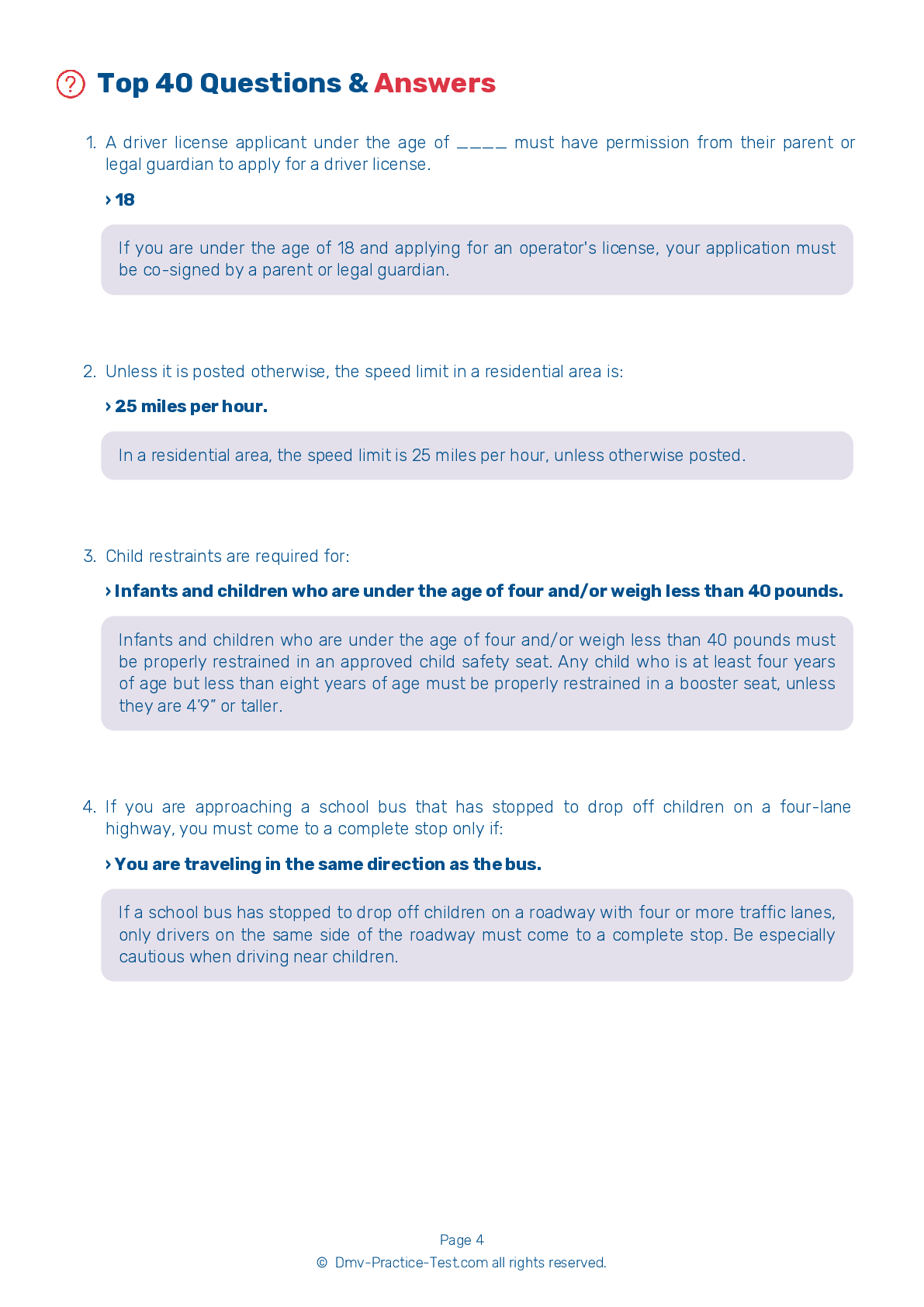FREE Ohio DMV Practice Test #6
The practise exams for Ohio's DMV have been revised for January 2025. It comprises questions based on the most important traffic signals and laws for 2025 from the Ohio Driver Handbook. To study for the DMV driving permit test and driver's licence exam, use actual questions that are very similar (often identical!) to the DMV driving permit test and driver's licence exam.
Each question on the practise exam has a tip and explanation to help you recall the ideas. Questions about traffic rules, traffic signs, and driving statutes, as well as knowledge from the Driver Handbook, will be included in the written portion of the official Ohio DMV test.
You must properly answer 35 of the 40 questions to receive a passing mark. To help you prepare for your instruction permit or driver's licence, take this practise test from the Ohio Department of Motor Vehicles.
The DMV exam is offered in a variety of languages.
Using any form of testing help will result in an automatic fail, and the DMV may take further action against your driver's licence, so avoid it.
1 . When traveling on a multilane roadway with traffic moving in opposite directions, how should drivers use the shared center lane?
The only time a vehicle should enter the center lane is at a point where the vehicle will have time to slow down or stop in order to make a safe left turn maneuver. The center lane should never be used as a passing lane or as a through-traffic lane.
2 . Railroad crossings should always be considered:
Railroad crossings are always dangerous. Drivers should always look and listen for trains approaching from either direction on all railroad tracks. Always follow the directions indicated by signs, signals, and flaggers. Never proceed past a railroad crossing until you are certain it is safe to do so.
3 . This sign means:




